Lesson 3.1 - Fish Form and Structure
1/283
Earn XP
Name | Mastery | Learn | Test | Matching | Spaced |
|---|
No study sessions yet.
284 Terms
Anatomy
is a branch of biology which deals with the structure of organisms.– macroscopic (gross) vs. microscopic anatomy
Morphology
refers to the outward appearance (shapes, forms, structure, color pattern, markings) of an organism or a taxon and its component parts.
science
systematized body of knowldege
natural science, social science
branches of sciences: studies natural phenomena, and studies social life and relations betw human be
biological science, physical science
branches of natural science; study of organic/ living phenomena, and study of inorganic phenomena
basic, taxonomic, applied divisions
divisions of biological science
cytology, histology, anatomy, morphology, physiology
basic division
botany, bacteriology, mycology, virology, zoology
taxonomic division
nursing, medicine, dentistry, horticulture, veterinary medicine
applied division
dorsal, ventral, anterior, posterior, dextral, sinistral, lateral
fish body orientations
spiny rays (spines)
unsegmented, never branched
soft rays
segmented, usually branched
depressiform, filliform, aguilliform, compressiform, fusiform, sagittiform, taeniform (ribbon-like), globiform, unclassified/combination
what are the major body forms
eel-like, greatly elongated, attenuated
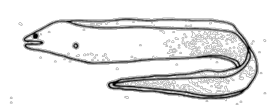
elongate, fulliform, basslike
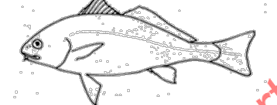
ovate, truncated
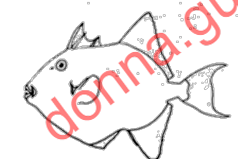
compressed or perchlike
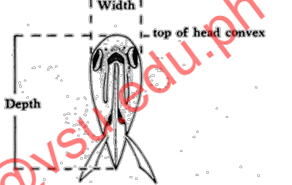
body depressed, flattened

body subcircular, hemispherical
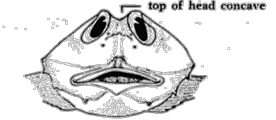
depressiform
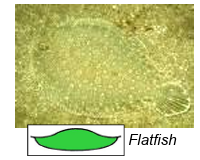
filliform
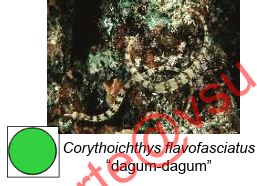
anguilliform
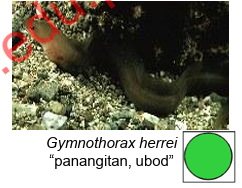
compressiform
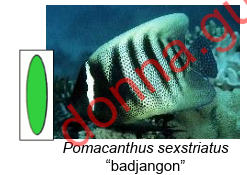
fusiform
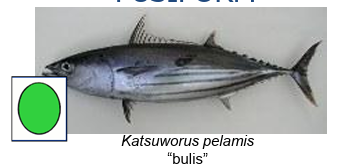
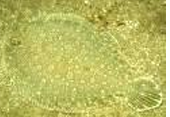
flatfish
example of depressiform
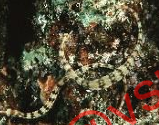
dagum-dagum
example of filliform
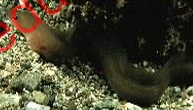
panangitan, ubod
example of anguilliform
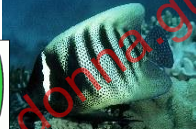
badjangon
example of compressiform
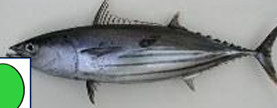
bulis, tamarong
example of fusiform
sagittiform
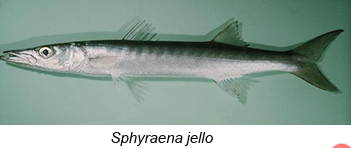
globiform
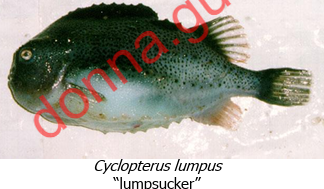
taeniform (ribbon-like)
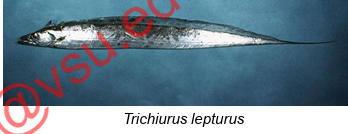
body form of a diodon fish
globiform
unclassified/combination
shape
The _ of a fish helps it hunt prey, avoid predators and move through its habitat.
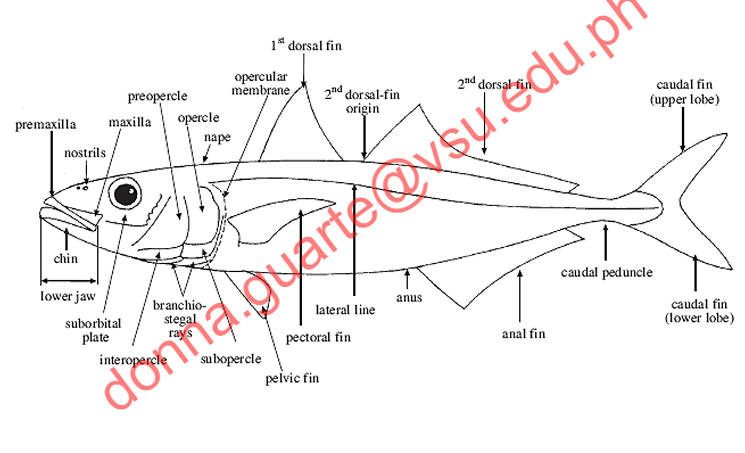
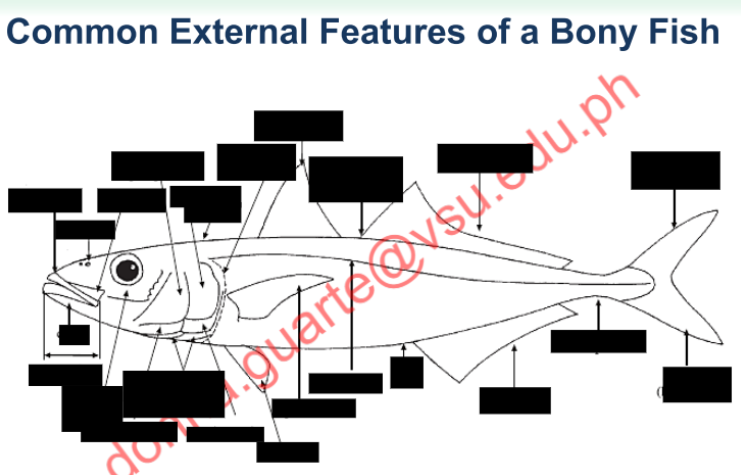
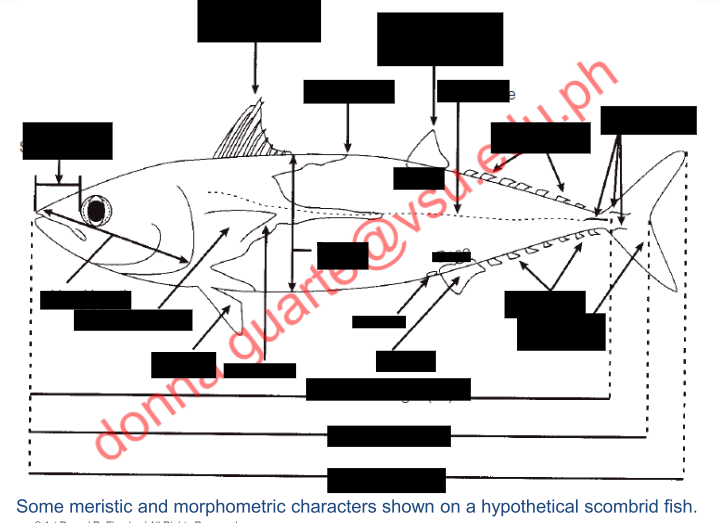
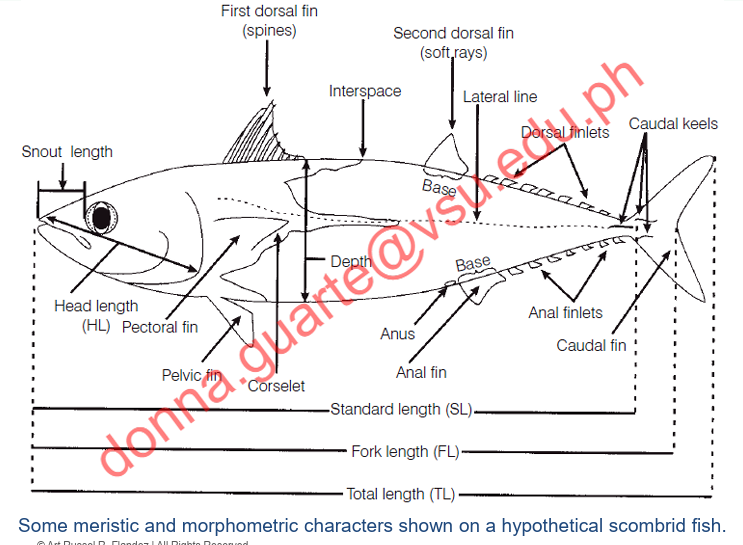
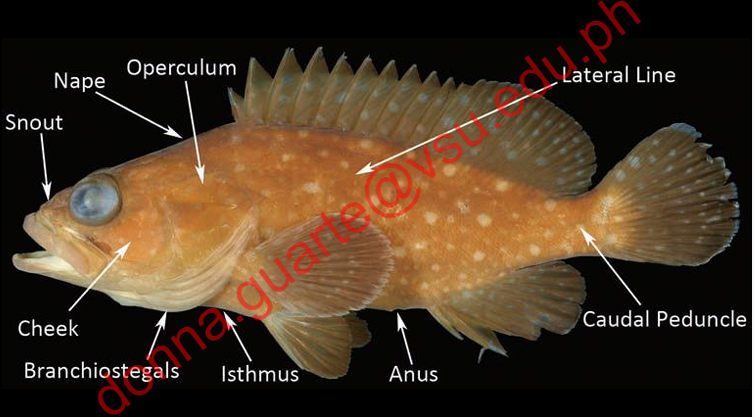
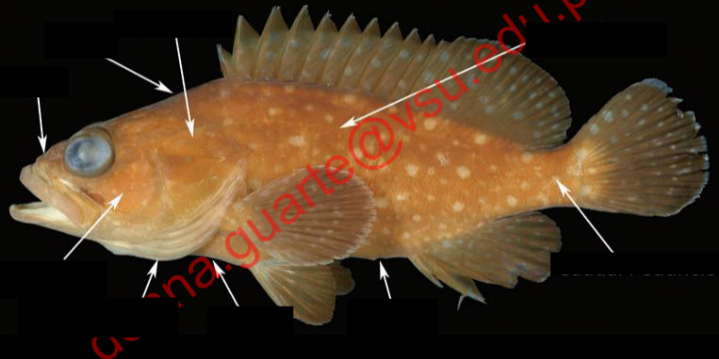
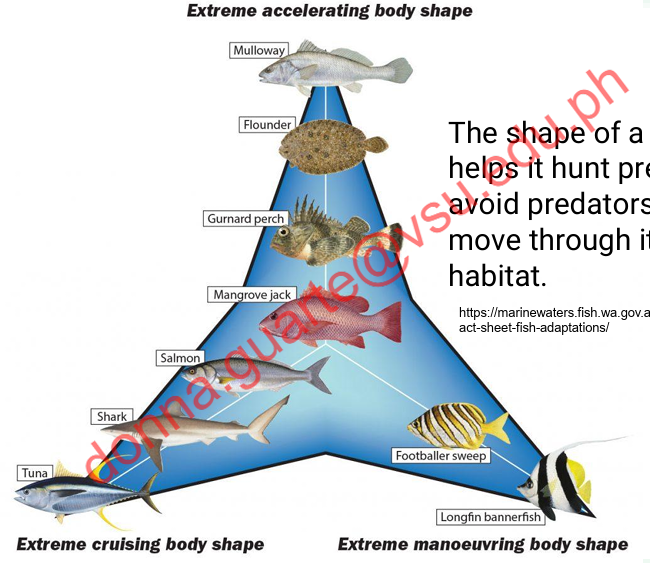
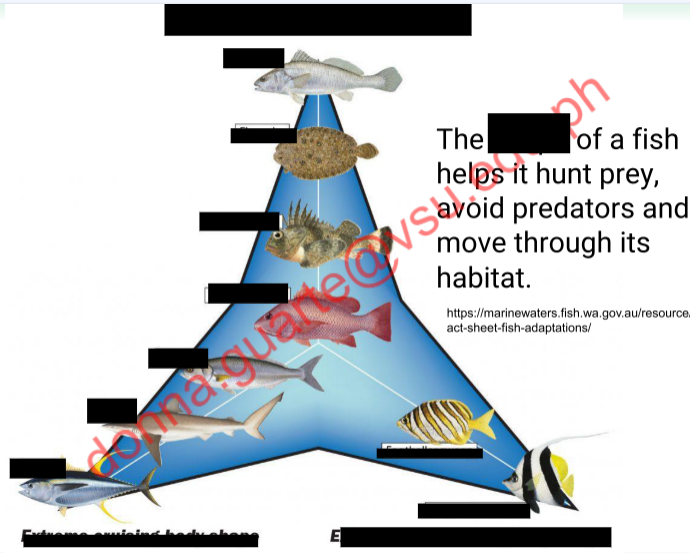
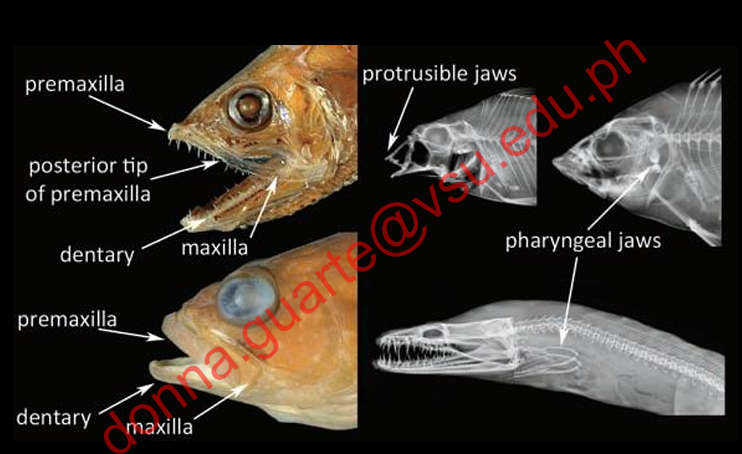
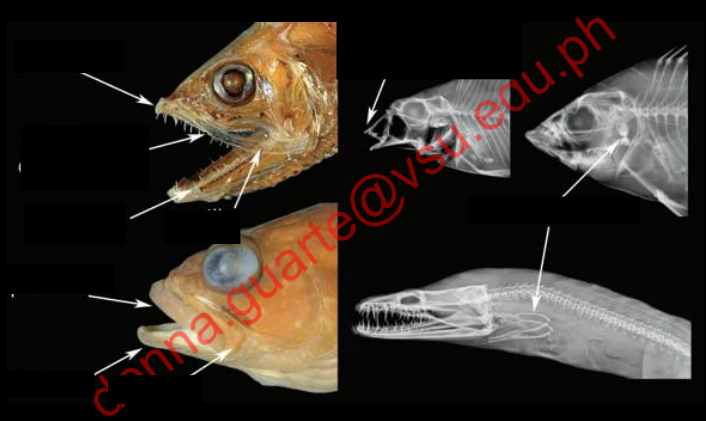
terminal, supraterminal/superior, subterminal/inferior
Mouth Positions
Terminal
it opens and feeds forward.
Supraterminal or superior
it opens upward to feed on items in the surface.
Subterminal or inferior
bottomfeeding behavior (algae or benthic organisms)
Supraterminal or superior
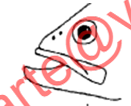
Terminal
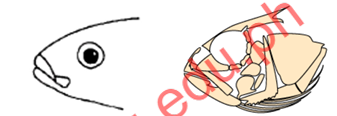
Supraterminal or superior
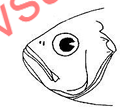
Supraterminal or superior

Subterminal or inferior
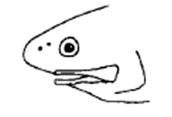
Supra-terminal (superior)
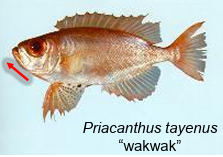
Terminal
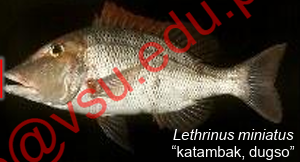
Subterminal (inferior)
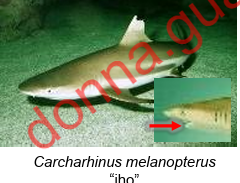
Subterminal (inferior)
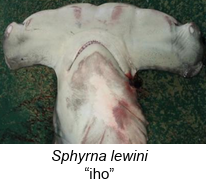
Subterminal (inferior)
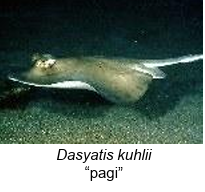
wakwak
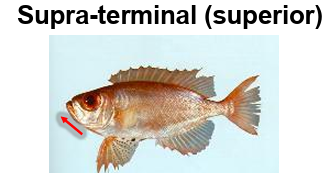
katambak, dugso
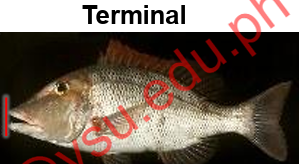
iho, pagi

terminal, subterminal, inferior, superior
mouth positions (newer definitions)
terminal
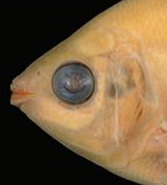
subterminal
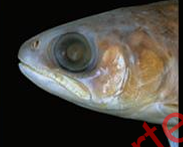
inferior
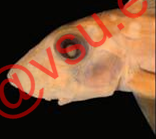
superior
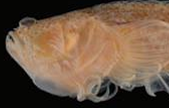
terminal
Mouth located at the tip of the snout.
subterminal
Mouth located below the tip of the snout.
inferior
Mouth opens ventrally, well posterior to the snout
superior
mouth opens dorsally
Suctorial mouths, tubular, beak-like, protrusible
other mouth modifications
Suctorial mouths
for scraping algae from rocks (Plecostomus)
Tubular
shaped mouth = sucking small prey hiding in holes and narrow fissures (Syngnathidae, Chaetodontidae)
Beak-like
mouth of parrotfish (family Scaridae) = scraping of algae off of hard corals
protrusible
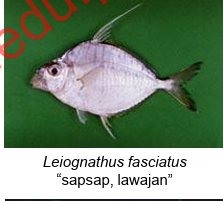
mouths of ponyfishes (family Leiognathidae & Gerreidae)
to suck prey from the bottom
Plecostomus
suctioral mouths
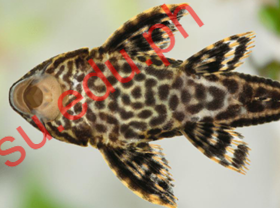
Syngnathidae, Chaetodontidae
tubular
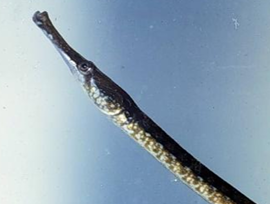
humphead parrotfish (Scaridae)
beak-like
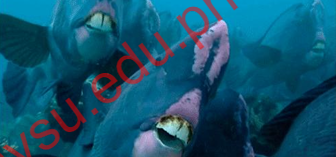
family Leiognathidae & Gerreidae
mouths of ponyfishes
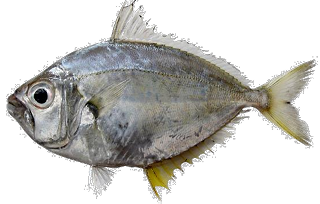
family Leiognathidae & Gerreidae
mouths of ponyfishes
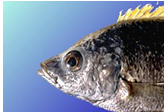
family Leiognathidae & Gerreidae,
protrusible
mouths of ponyfishes
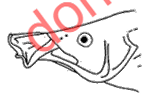
alibangbang
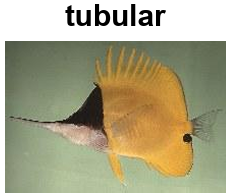
molmol
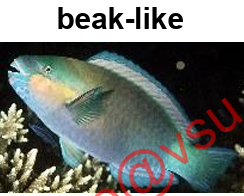
sapsap, lawajan
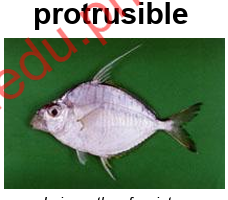
alibangbang, seahorse
tubular mouths
molmol, botete
beak-like mouths
sapsap, lawajan, latab
protrusible
movement (swimming)
stability
nest-building and spawning*
tactile organs*
uses of fins
paired (pectoral - p1, pelvic - p2)
median (dorsal - D, anal - A)
two major types of fins
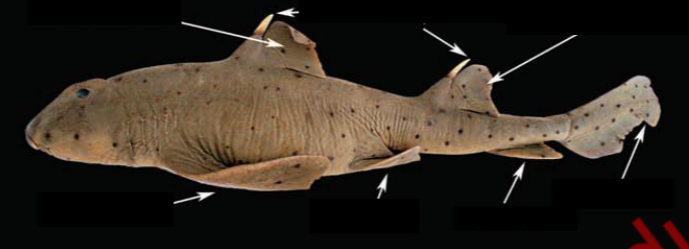
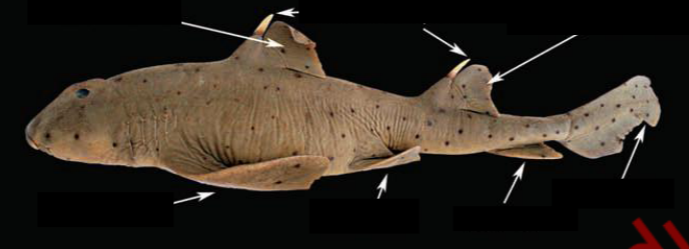


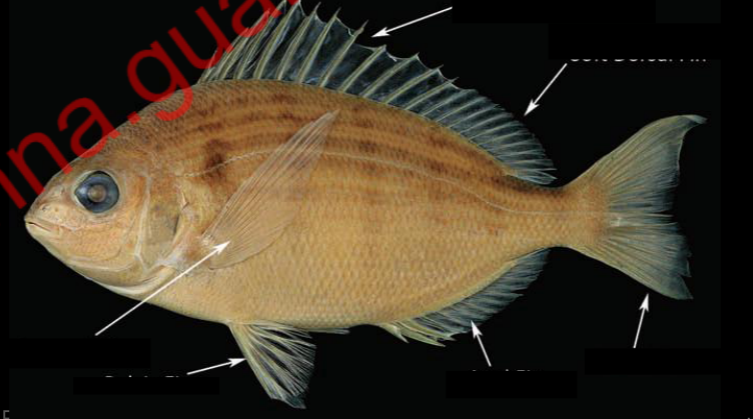
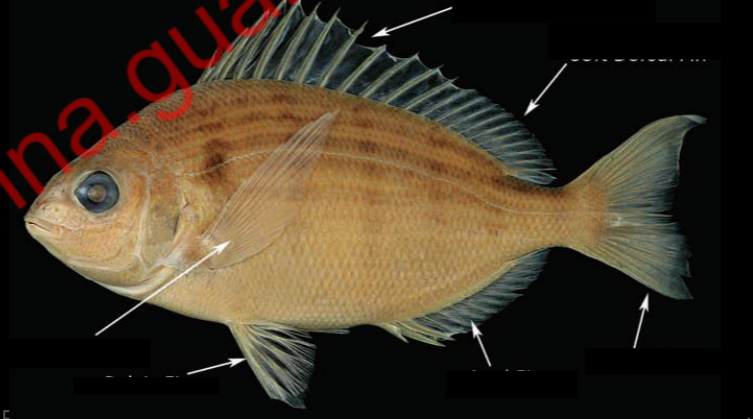
pectoral fins (paired) - p1
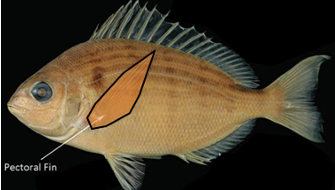
pectoral fins (paired) - p1
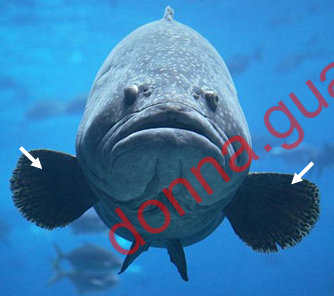
pectoral fins (paired) - p1
located on each side, usually just behind the operculum, and are homologous to the forelimbs of tetrapods
pectoral fins (paired) - p1
mainly used for maneuverability
Pectoral Fins (paired) – P1
what fins are these
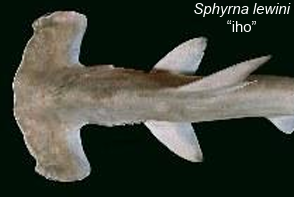
Pectoral Fins (paired) – P1
what fins are these
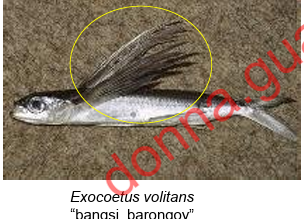
creation of the dynamic lifting force
a peculiar function of P1 fins, highly developed in some fish, is the _ that assists some fish in
in maintaining depth (sharks)
enables the "flight" for flying fish
in maintaining depth (sharks)
enables the "flight" for flying fish
a peculiar function of P1 fins, highly developed in some fish, is the creation of the dynamic lifting force that assists some fish in
P1
in some fish, _ aids in walking, especially in the lobe-like fins of some anglerfish and in the mudskipper
P1, finger-like projections
certain rays of the _ may be adapted into_, such as in sea robins and flying gurnards
sea robins and flying gurnards
certain rays of the P1 may be adapted into finger-like projections, such as in